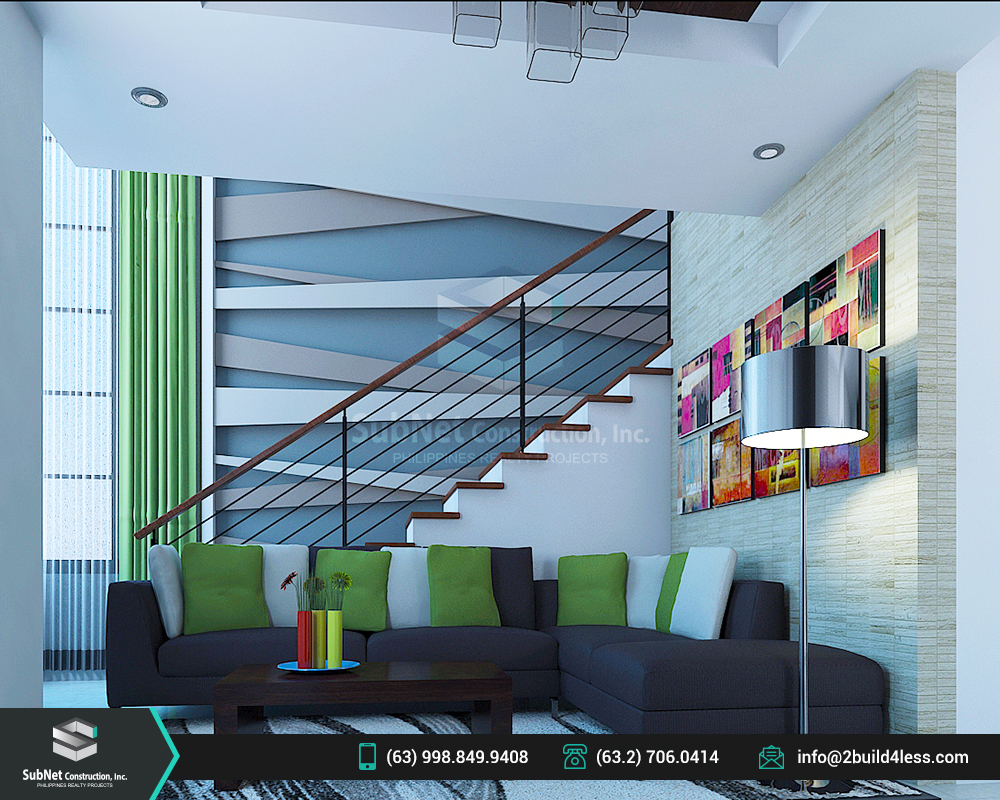
Last week, Subnet Construction shared with you the different types of interior design along with our very own design collection. With the goal of helping you decorate the interior of your home, let us dig deeper into the importance and the rules to remember in interior design.
Rhythm Rules in Interior Design
Rhythm matters not only in music but also in interior design. It is actually considered by many people to be the secret that makes a successful design. You may rarely notice it, but rhythm is the pattern that ties all the individual design elements in your interior together. It could be the pattern of colors, prints, and/or shapes in your interior that influence the path that your eye follows. Basically, there are four rules to apply rhythm in your design:
- Repetition – repeating elements of design;
- Alternation – alternating two or more elements in a pattern;
- Progression – a gradation of color or a series of objects organized by size, and
- Contrast – putting two elements in an opposition to one another.
Proportion and Scale Rules in Interior Design
In interior design, Scale refers to the size of an object or space in relation to the human body. Proportion, on the other hand, refers to how two objects relate to each other in a room. Here are some general rules to follow in applying proportion and scale in interior design:
- If the room is small, keep patterns to scale;
- Leave “white space” so the eye has room to rest;
- Taller and more imposing furniture in tall rooms; and
- Larger furnishings and decor in larger rooms.
Most of the time, the golden ratio 1:618 is applied in interior design. According to Freshome, “Designers often divide the room into two sections: one that takes up two-thirds of the space and a smaller section consisting of the last third. The larger section contains the room’s main furniture, which makes its primary function clear. The smaller section accounts for a secondary use, such as an alternative seating area or storage.”
Harmony and Unity Rules in Interior Design
These set of rules care about how the elements in a space or room, no matter how similar or different they are, work together without clashing. Harmony specifically refers to the sense that all of the elements of your design fit together, whether through the same theme, aesthetic style, or mood. Unity refers to the repetition of particular elements throughout your design — whether they’re colors, shapes, or materials — to pull the look together. Some general rules to remember here are as follows:
- Have only a few colors but in varying shades;
- Use similar shapes or textures to create a flow;
- Consistent patterns to create harmony; and
- Choose accessories that fit within a theme.
Balance Rules in Interior Design
Balance, in the field of interior design, means equal distribution of visual weight in a room. It is the element that will make you feel comfortable once you enter a room because seems correct and in place. Like in any other element, there are three basic rules in balance that you have to incorporate when designing your interior. These include the following:
- Symmetrical Balance – Objects are repeated or mirrored along a central axis;
- Asymmetrical Balance – Different objects of equal visual weight on either side of the axis; and
- Radial Balance – Arrangement of objects around a central point extending outward or inward.
Focal Emphasis Rules in Interior Design
Basically, Emphasis refers to having points of interest or focal points in a room. The focal point is in fact one of the most fundamental elements in interior design. Designers consider it the star of the room, as it is the first thing that you will notice once you enter a room. Some simple rules to remember in this area are:
- Surround fireplace with texture or objects of interest;
- Add a spot of light to an artwork to create emphasis;
- Specialty chandeliers, beams, or contrasting paint add drama and elegance to high ceilings; and
- Window treatments for large windows add coziness – repeat the color somewhere in the room.
In actuality, there are many other interior design rules to remember such as the 3/3 vertical rule, the 10-30-60 rule, and the rule of threes. But at the end of the day, it is more important to go back to basics not only for safety purposes, but just so you can feel at home in your own home.
To see more of our interior designs, you can browse through our own model houses. You can also contact us for a FREE consultation.
Together, let us design dreams and build realities!
Sources:
– Freshome. “3 Powerful Interior Design Rules That Can Transform Your Home”. freshome.com. https://freshome.com/interior-design-rules (accessed August 10, 2018)
– Freshome. “Back to Basics: The Importance of Rhythm in Interior Design (Plus, How to Make It Work for You)”. freshome.com. https://freshome.com/Rhythm-interior-Design (accessed August 10, 2018)
– Freshome. “Everything You Need to Know to Create a Focal Point in Interior Design”. freshome.com. https://freshome.com/focal-point/ (accessed August 10, 2018)
– Freshome. “The Importance of Harmony and Unity in Interior Design”. freshome.com. https://freshome.com/harmony-and-unity (accessed August 10, 2018)
– Freshome. “The Importance of Scale and Proportion in Interior Design”. freshome.com. https://freshome.com/scale-and-proportion (accessed August 10, 2018)
– Home Stratosphere. “19 Stripped-Down Essential Interior Design Rules (Design 101)”. homestratosphere.com. https://www.homestratosphere.com/interior-design-rules/ (accessed August 10, 2018)
– Interaction Design Foundation. “The Golden Ratio – Principles of form and layout”. interaction-design.org. https://www.interaction-design.org/literature/article/the-golden-ratio-principles-of-form-and-layout (accessed August 10, 2018)